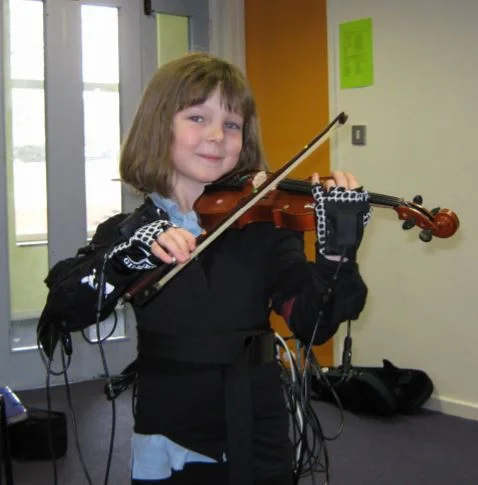Since its first iteration, Augmented Reality (AR) has been disrupting education, health, entertainment, and many other fields. By enhancing the senses and abilities it has delighted but also aided in solving difficult problems. In arts and culture, AR has transformed static museum displays and provided special effects for stage productions. But the use of AR hasn’t gone much beyond support in storytelling, and the adoption of such a versatile technology as a tool in the production processes has been tentatively explored.
Integrating Music Technology in the Classroom: Increasing Customization for Every Student
The following study investigates emerging technologies and their implications for music education, inside and outside the classroom. Learn how apps, digital instruments, practical aid technology, and wearable technology can be used to increase engagement and learning opportunities for music students in various settings.
Wearables in the Performing Arts: An RFID Primer for Arts Managers
White Paper Wednesday: Wearables and the Performing Arts
In 2014, Google Glass had emerged as the leader in wearable technology available on the market. Today, while Google Glass has receded to the fringe of conversations about Augmented Reality and Virtual Reality, wearables have re-entered the mainstream consciousness, and wide-spread adoption feels inevitable.
These trends considered, today's featured white paper from 2014, Performing Arts in the Wearable Age by Thomas Rhodes and Samuel Allen, is a fascinating look back at predictions and projections from just two years ago.
While many things have changed since 2014, this paper's focus on current uses of wearable technology, future implications, opportunities and concerns for performing arts organizations are as useful as ever. The authors' discussion of the hardware specs of wearable devices is particularly nuanced. Equally relevant are the various uses and exciting windows for wearable implementation in music, theatre, and beyond.
While many of the projections cited in this publication might not hold water today, today's current events indicate that widespread adoption of AR/VR is near. From Pokemon Go to continuing developments in Oculus, it is clear that arts organizations will soon have no choice but to confront this exciting and game-changing trend.
Banner image by Dan Leveille via Wikimedia Commons, licensed under Creative Commons
Viewpoint of Billions
Wearable technology is all anyone is interested in talking about these days, and certainly AMT Lab is no different (for example, see Performing Arts in the Wearable Age). I’d like to take a brief interlude from gossiping about when Apple’s smart watch is going to drop to refocus on an “older” wearable technology: Google Glass.
Let me preface this by saying I am not an Explorer (or a Glasshole–whichever floats your boat) but as a casual observer of technology, I’ll jump at the chance to try something new. Like Google Glass. So when the National Portrait Gallery offered me (and the rest of DC) the chance to do just that, you bet I went for it.
Performing Arts in the Wearable Age
Wearable computing devices--including smartwatches, fitness and health tracking devices, and smartglasses--are projected to quadruple between now and 2018. What does their increased use mean for the performing arts? In their follow-up paper to "Through The Looking Glass: How Google Glass Will Change the Performing Arts," guest correspondents Thomas Rhodes and Samuel Allen explain wearable technology, provide an overview of current experiments with these devices among performing arts professionals, and discuss potential implications and challenges for the field.









